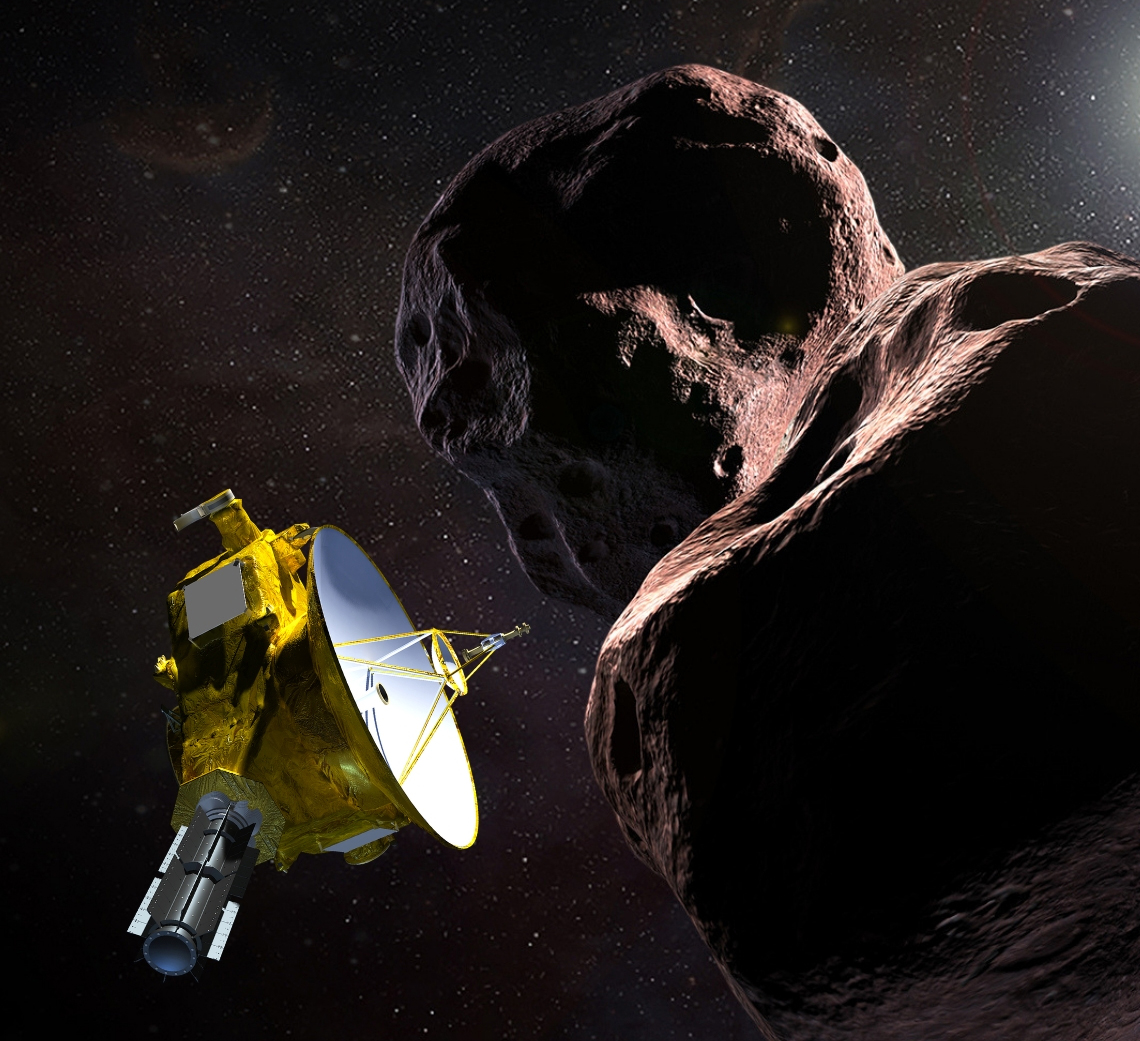 Postponed due to weather until January 3
Postponed due to weather until January 3
On July 14, 2015, NASA’s New Horizons spacecraft flew past Pluto, but its mission didn’t end there. On New Year’s Day, 2019, the probe will perform another flyby of a Kuiper Belt object nicknamed Ultima Thule. The New Mexico Museum of Natural History & Science is closed on January 1, but will host an encounter party on January 3 from 12 – 3 p.m. Learn about the first mission to study the edges of our solar system with hands-on activities, videos, and local solar system experts.
Ultima Thule (which means "beyond the known world") is located in the outermost regions of the Solar System, outside the orbit of Neptune. In the early morning of January 1, NASA's New Horizons spacecraft will fly by the object at a distance of 3500 km (2200 miles). At this time, Ultima Thule will be at a distance of almost 6.5 billion km (4 billion miles) from the Sun, making this the most distant planetary flyby that has yet been attempted, and the first time that a Solar System body of this type has been seen close-up. At that incredible distance, the space probe’s data stream will take almost six hours to reach the Earth on radio waves traveling at the speed of light.
Ultima Thule measures approximately 30 km (19 miles) in diameter, and is irregularly shaped. In July 2017, Ultima Thule passed in front of a star as seen from Earth (a stellar occultation), allowing astronomers to determine that its shape is most likely a contact binary (two bodies that are touching) or a close binary system (two objects that are orbiting each other).
“New Mexican’s have a special attachment to the New Horizons spacecraft since it carries a small container with ashes from long-time resident and discoverer of Pluto, Clyde Tombaugh” said Museum Space Science Director Jim Greenhouse.
The Museum’s Planetary Geologists, Larry Crumpler and Jayne Aubele, will be at a table to answer questions about Pluto, Kuiper Belt Objects, or anything else orbiting our sun. Joining them will be a local NASA Solar System Ambassador, Leonard Duda. If NASA offers updates on the New Horizon’s mission that day, they will be shown in the ViewSpace Theater.
Everything is included in museum or planetarium admission on January 3. This is the first close-up study of an object that far from the sun and most likely the last one for decades. Don’t miss this historic event!



